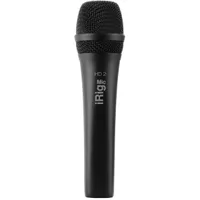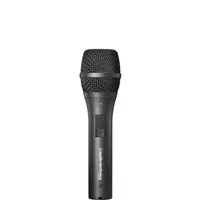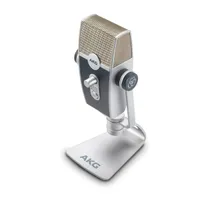Best USB microphones 2025: Plug-and-play mics for everything from streaming to singing
Capturing audio has never been easier, with these all-in-one USB microphones from Shure, Sennheiser and more

USB microphones have come a long way. There was once a time when the term conjured images of flimsy, foam-capped conference mics with the sonic signature of a wasp trapped in a can of soda – but thankfully, those days are no more. Today's best USB microphones go toe-to-toe with professional mics for sound and utility, with a lot less up-front investment to worry about too.
Nothing is going to replace the well-entrenched standards of professional studios and recording set-ups, wherein XLR cables mate mics to analogue hardware and, eventually, an audio interface of some description. But USB microphones are a great levelling of the playing field, incorporating analogue tech and digital audio conversion in one very handy, universally-plug-in-able unit.
If you’re a budding voiceover artist hoping to record yourself at home, a musician wanting to track some basic demos, a podcaster working towards your first project, or even a gaming streamer wanting a bit more fidelity, you no longer need to buy a load of devices to achieve your basic aims. With quality USB mics made by a variety of trusted brands in audio, you can access broadcast-quality sound captures for very little.
There are some different criteria that set USB microphones apart, just like there are various mics for different use cases. And if you'd like to know my top pick before diving into the full guide, I've gone for the ultra-reliable Shure MV7+ thanks to its excellent build quality, great sound and its ease of use for podcasting, streaming and recording.
For more information about what distinguishes certain USB mics, and how to choose between them accordingly, I have an extensive FAQ section below with all the details. If you want to get straight to business finding out the rest of my picks for the best USB microphones, read on.
Best USB microphones: Quick list
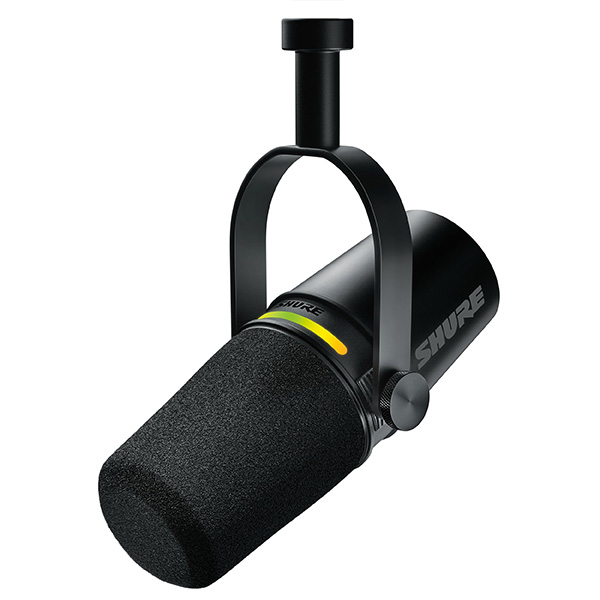
The Shure MV7+ is, in no uncertain terms, the ideal USB microphone. It takes cues from its successful all-analogue siblings, and folds in some very impressive, user-friendly DSP too. With both USB-C output and an XLR output for conventional use, this is an incredibly versatile choice – and one that will go the distance.

The Rode PodMic USB is the latest fruit in Rode’s bid for podcasting supremacy – and it sticks the landing too. Solid sound performance and some powerful built-in DSP make it a versatile powerhouse, and an excellent starting point for the budding podcaster.
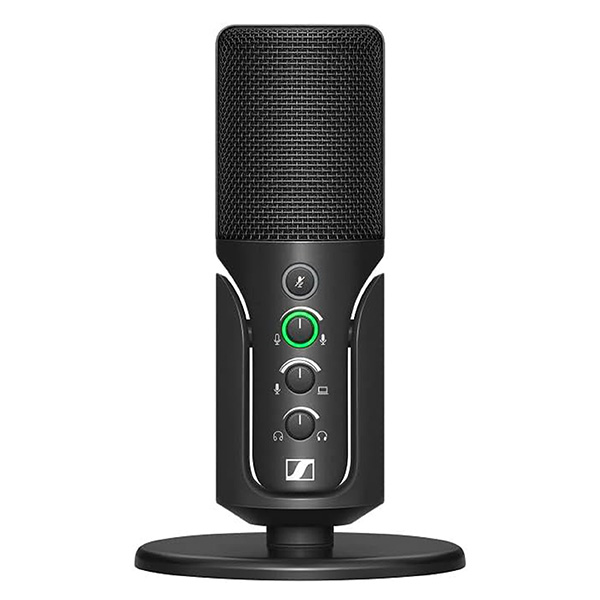
As far as sound-per-pound goes, it’s hard to beat the Sennheiser Profile. This USB microphone sits towards the cheaper end of the price spectrum, and yet offers a solid build, a rewardingly-sensitive condenser capsule, and a suite of on-board controls that simplify its use.
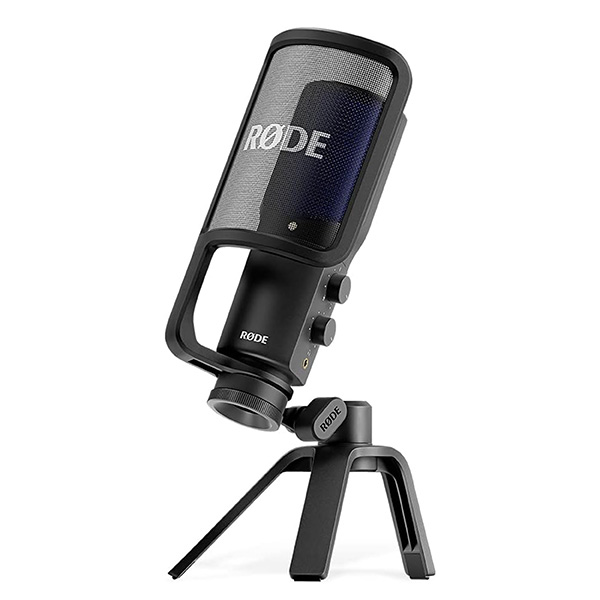
Another from Rode, but this time with vlogging firmly in view. The Rode NT-USB+ shares the clever DSP of the PodMic USB, but this time in a desktop condenser mic that carries a little more stature than its USB-y siblings. This is a solid choice for anyone looking to level up their voiceovers.

Shure’s MV6 is a simpler version of the MV7+ that tops my list. This is a truly plug-and-play device, with smart auto-levelling for hands-free gain-staging and some handy app-based digital control to make using it as easy as can be.
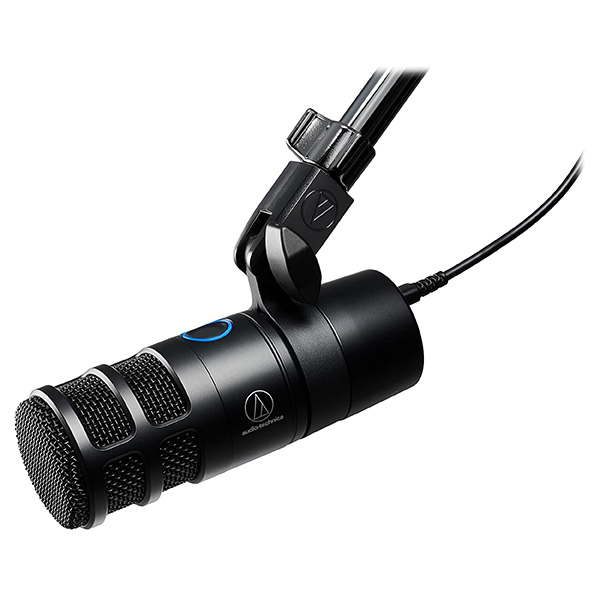
Audio-Technica’s AT2040USB is a fantastic dynamic USB microphone, boasting a hyper-cardioid polar pattern for rear-side rejection and high-resolution 24-bit/96kHz audio. It’s an extremely capable thing at an extremely accessible price, and I love it.
Load the next 3 products... ↓
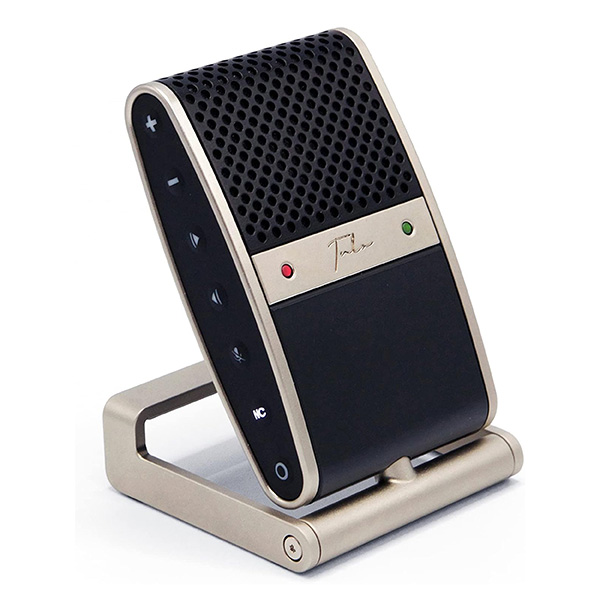
The Tula Mic is a distinguished piece of audio kit, combining swish field-recording technology with high-quality microphone capsules and straightforward USB functionality. With updated firmware, the Tula Mic can also multitrack record via a second 3.5mm input for lavalier mics.
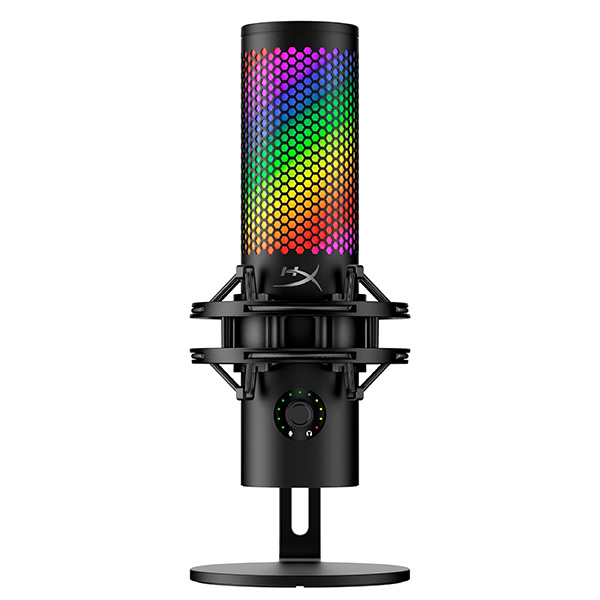
The HyperX QuadCast 2 S is a surprisingly full-featured little microphone, and the ideal choice for the streamers amongst us. 32-bit, 192kHz resolution is hi-fi to the point of overkill, and the switchable polar patterns hugely considerate; you should buy it for the customisable RGB, though.
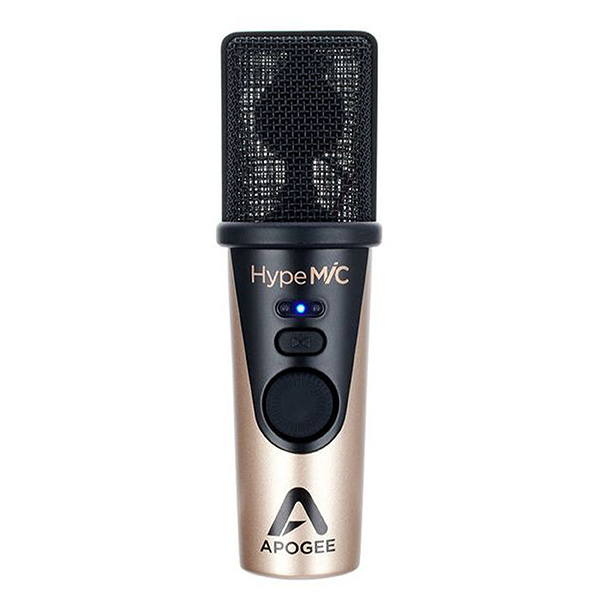
In addition to high level audio quality – 24-bit/98kHz – the jewel in the HypeMic’s crown is its on-board compressor, which gives you three levels of compression to help tame dynamic voices for that radio-style consistency. If pristine audio is a deal-breaker for you, and you have the cash, then it’s well worth your consideration.
Best overall
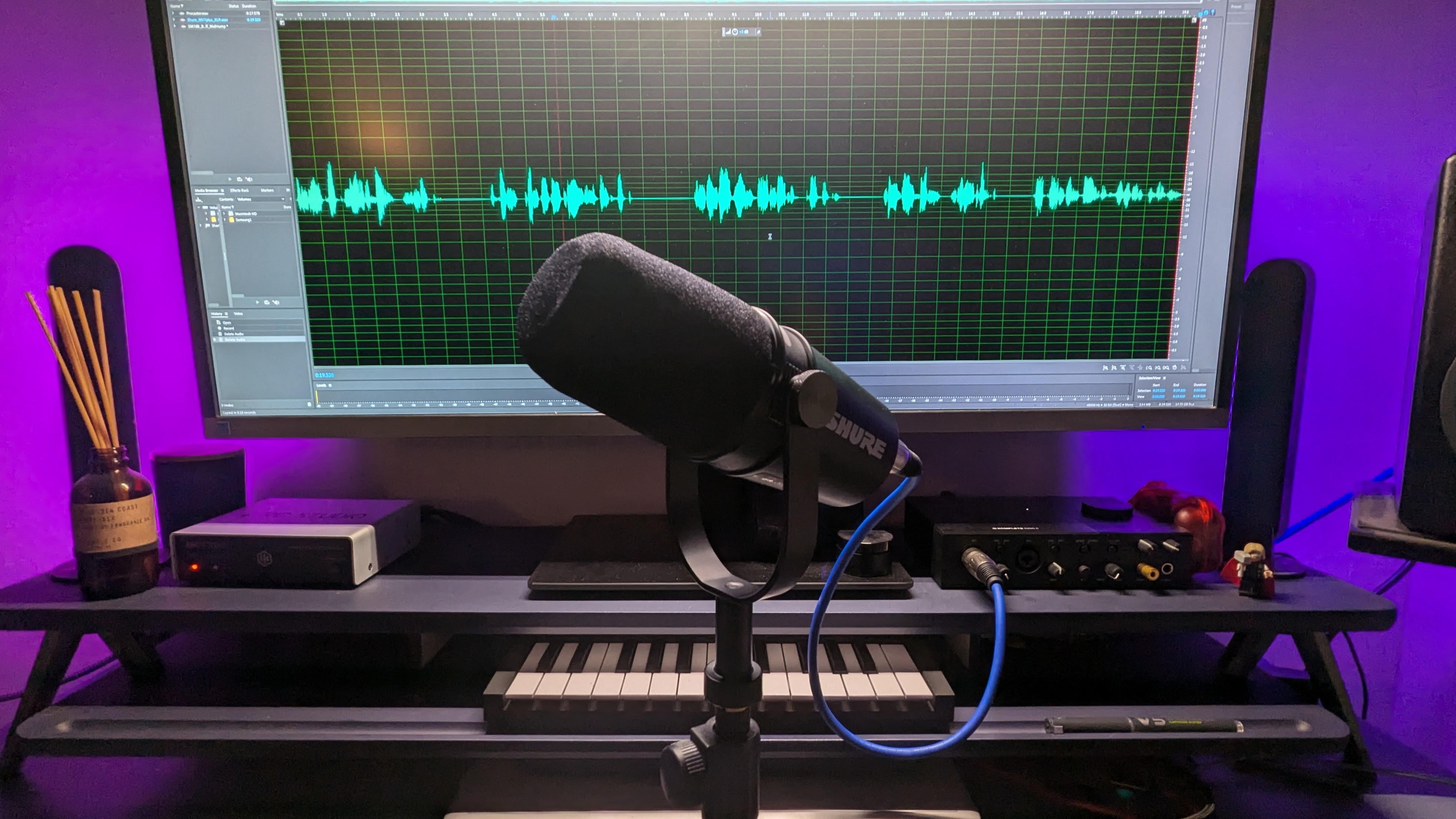
Specifications
Reasons to buy
Reasons to avoid
✅ Buy if you want a solid, versatile and easy to use mic: The Shure MV7+ is feature-rich, simple to use and is a brilliant all-round option.
❌ Avoid if you want an internal shock-mount: Unlike the SM7B, there's no shock-mount, so bear that in mind if stability is paramount.
Build quality: ★★★★½
Sound: ★★★★½
Ease of use: ★★★★½
Overall: ★★★★½
The lowdown: Shure is surely The Name in microphones; studio or stage, you’ll find a veritable smorgasbord of Shure microphones in prominent usage or on standby, from the indestructible workhorse SM58 vocal mic to the voice-for-radio broadcast mic-du-jour SM7B, and far beyond. This, the MV7+, is a second-iteration podcast mic for the masses – cramming quintessential Shure quality in with digital connectivity and a host of accessible add-ons.
Build quality: The MV7+ takes after Shure’s SM7B, with its swivel mount for ease of positioning; it also benefits from an all-metal housing, which upped my confidence in the MV7+ immediately. Though it is more feature-rich than its broadcast-ready sibling, the MV7+ comes in much cheaper; it’s great to know that, despite the lower price, this USB microphone is still ready to handle some knocks. That said, there isn’t an internal shock-mount as there is on the SM7B – something to bear in mind if you’re intending to bungee jump with it or something.
Sound: The Shure MV7+ sounds great. It’s clear, bright and in possession of a surprisingly supple low end. There’s a little extra attention given to mid frequencies, an apt decision by Shure given the microphone’s primary vocal-centric use cases.
There are some additional DSP (digital signal processing) goodies wrapped up in the MV7+ too, including digital denoising and an auto-level option for automatic gain-staging related to your proximity to the mic; these trivialise capturing high-quality audio for the beginner, and take a lot of the work out of conditioning high-quality audio for those with a bit more experience under their belt. At this price, Shure have threaded the needle perfectly.
In use: The Shure MV7+ is a flawless thing to use, both for beginners and for old hands. The USB-C connectivity is foolproof, and the option of an XLR connection a boon I’m personally hugely grateful for. The auto-level mode worked flawlessly too, with recipients of various video calls conducted using the MV7+ reporting a steady, well-balanced sound, regardless of any unflattering and distance-making moves undertaken by yours truly.
The Shure MV7+ gets so much right. From its solid construction to its bevy of helpful automated tools, the value prospect is huge – both for beginners and for those with more experience using microphones. This is easily one of the most versatile, feature-laden mics for podcasting, streaming and recording

"Finesses the original to deliver one of the most versatile, feature-laden mics for podcasting, streaming and recording."
Read more: Shure MV7+ review
Best for podcasting
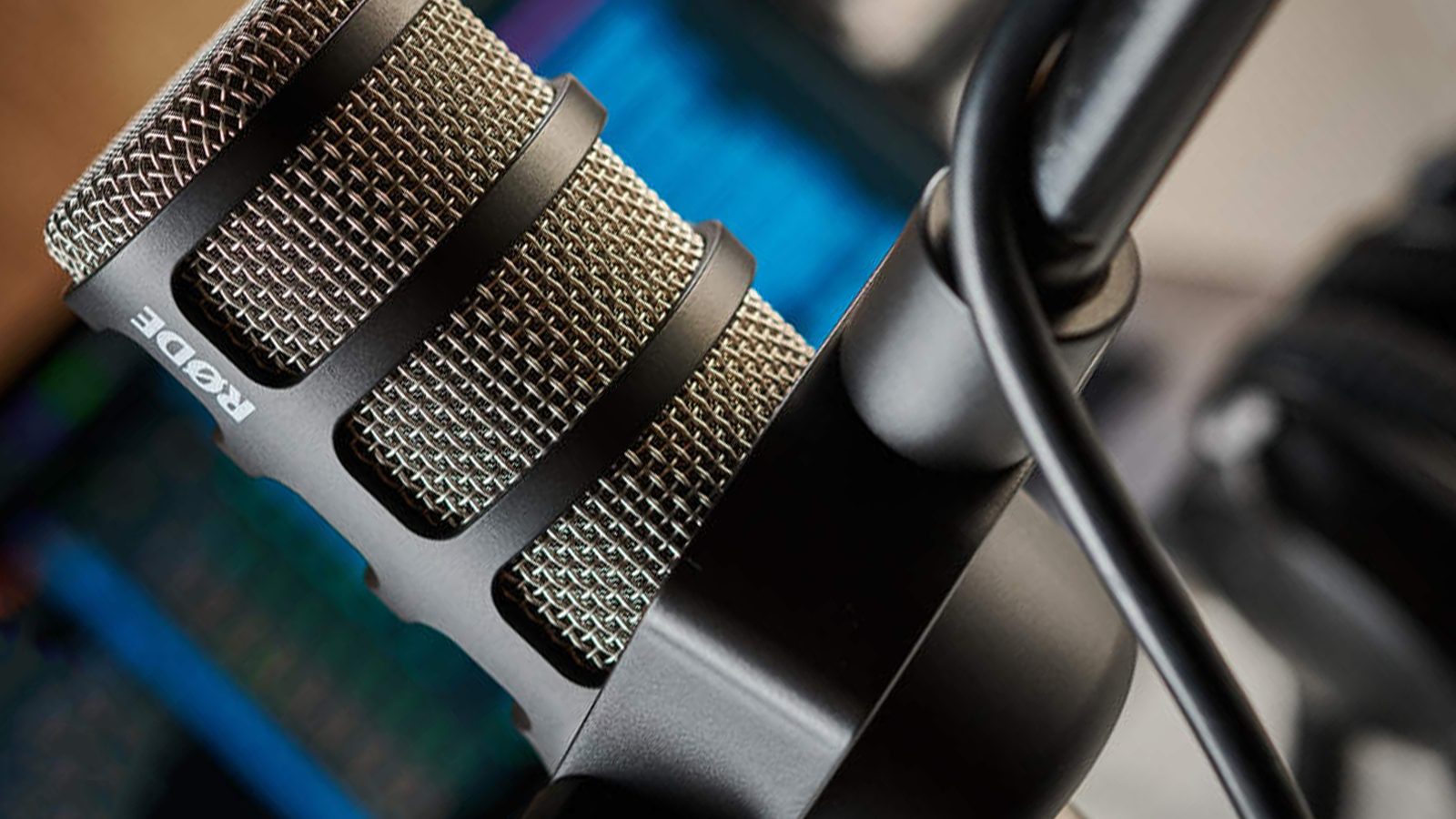
2. Rode PodMic USB
Our expert review:
Specifications
Reasons to buy
Reasons to avoid
✅ Buy if you want one the best podcasting mics around: The Rode PodMic USB offers great value for money, performs well and is a rock solid option.
❌ Avoid if you want no-fuss set-up: The swing-mount is a bit of a faff to get up and running and you'll need patience to install the various apps.
Build quality: ★★★★½
Sound: ★★★★½
Ease of use: ★★★★
Overall: ★★★★½
The lowdown: Podcasting is a lucrative industry and, as a result, the range of podcasting microphones is now a highly competitive market. To stand shoulder-to-shoulder with other pro productions, you need to know your vocal captures are solid. Where better to look than one of the broadcast-tech giants, Rode? This is Rode's PodMic USB, a USB-C-toting successor to the excellent end-address PodMic that came before. For a little more money, you get a PodMic with a built-in ADC and a headphone out for monitoring. Plus, everything that made the first PodMic great.
Build quality: The Rode PodMic USB is all metal; well, on the outside, at least. A solid chassis and hinge-mount make this reassuringly stable wherever you mount it. The swing-mount is great to use, though there’s not much clearance between it and the base of the mic where connections are made. This isn’t so much of a problem for podcasters though, particularly if you invest in a boom arm for it. On the base, you’ll also find a knurled roller for controlling headphone volume, if you choose to monitor yourself through the mic’s own converters.
Sound: When the this Podmic USB first launched in 2023, MusicRadar was there – and was particularly excited about the frequency response improvements made since the original, XLR-exclusive Rode PodMic. Here, I can absolutely attest to the quality on display. The frequency range is 20Hz to 20kHz, nice and extensive for the mostly-voices jobs it’ll be asked to do. There’s a little mid-range heaviness built into this USB microphone’s character, which I personally found to be a useful and – for want of a better word – musical treatment for vocal capture.
The PodMic USB also benefits from a suite of Aphex DSP effects, including Aphex’s famed Aural Exciter. Via the Rode Connect app, you can activate and alter these effects for better control of your output – the results of which are saved to the mic itself, so you don’t need the Connect app elsewhere to benefit from that Big Bottom low-end bolstering.
In use: The only frustration I had with using this mic – besides the somewhat-voluntarily installation of various apps – was with utilising its swing-mount properly. With connectors on the base, you have to pick which ‘side’ the Rode points, which can be annoying for more excitable podcast hosts or guests. That this is my nitpick should speak volumes as to the Rode's simplicity in use. The on-board monitoring is extremely handy, as is the native saving of DSP effect settings. And it just sounds great, too.
The Rode PodMic USB is one of the best microphones you can buy for podcasting. Yes, there are better microphones, and yes, you might benefit from one day investing in a more modular audio capturing system, but as far as bang for buck is concerned, this is a clear and versatile podcasting winner.

"A well-made, robust dynamic mic. its design and frequency curve are best on speech, but it also works as an instrument mic."
Read more: Rode PodMic review
Best budget
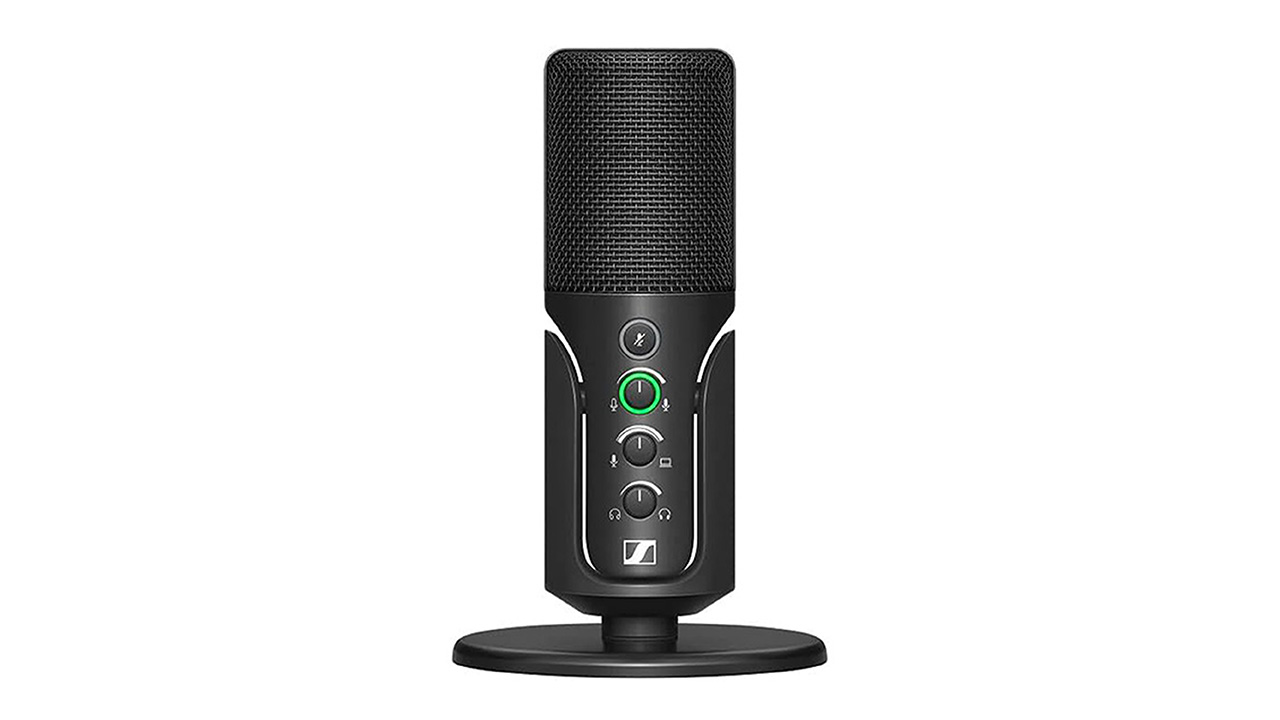
3. Sennheiser Profile
Our expert review:
Specifications
Reasons to buy
Reasons to avoid
✅ Buy if you a budget mic that won't let you down: This is a plug-and-play mic which has great hands-on controls and a rugged build.
❌ Avoid if you have a bit more money to spend: More cash will get you more bang for your buck, but what's here won't let you down.
Build quality: ★★★★½
Sound: ★★★★
Ease of use: ★★★★½
Overall: ★★★★½
The lowdown: USB microphones have been knocking around for a while, but it’s only really in the last decade that competition has become serious. This is evidenced by the increasing number of legacy microphone brands bringing their own interpretations of what a USB mic can be to market. One such brand is Sennheiser.
The Sennheiser Profile is the brand’s first foray into this special beginner-friendly space – though not its first USB microphone, an accolade which instead goes to the USB-C version of its XS lavalier microphone released in 2021. While not the first to the party, the Profile has nonetheless brought the goods, and at a tantalising price.
Build quality: The Sennheiser Profile is one of the cheaper microphones in my list – at least, as far as the decent ones are concerned. At just under £110/$120, this is one of the more accessible USB microphones you could trust on the market; at such a price, it shouldn’t be surprising that some compromises have been made. Still, it’s a solid and hardy thing, which also benefits from a cool, flush hinge mount that lets you angle the Profile to your liking.
Sound: This particular USB microphone is a condenser mic, as opposed to a dynamic mic; the active circuitry involved in condenser mics enables greater sensitivity – sensitivity which, in the Sennheiser Profile’s case, gives you great dynamic range for a veritable song. It sounds bright, clean and clear, and handles small sound up close in as admirable a fashion as you could expect for the price.
In use: The Sennheiser Profile is, shock horror, a joy to use. It’s effectively plug-and-play – and wears its audio-interface-y features a little more openly than other USB microphones, which I’m personally a big fan of. Three dials and a button on the front enable you to control your input level, mute yourself, and control the mix and volume you hear from the Profile’s headphone output.
The tactile control of these elements is hugely practical, and conjures more confidence than the intangible app-control alternatives. These controls are ringed by LED indicators, too, so you can see at a glance whether you’re powered on, at a healthy volume or clipping the input.
For the price, the Sennheiser Profile is excellent. Hands-on controls, condenser-mic sensitivity and a decently-rugged chassis make for a high-value USB microphone, made all the higher-value for its relative cheapness on the shelves.
Best for vlogging
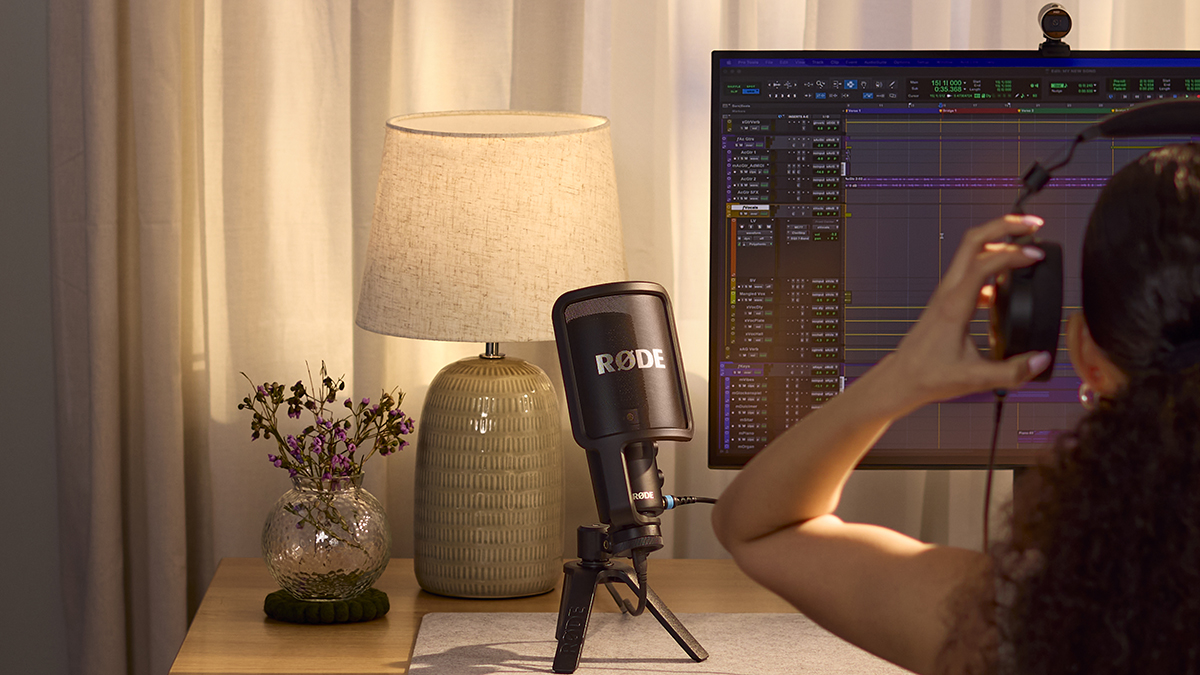
Specifications
Reasons to buy
Reasons to avoid
✅ Buy if you're looking to lay down YouTube voiceovers: The Rode NT-USB+ gives your voice clarity and balance over video.
❌ Avoid if you want to adjust gain on the fly: There's no physical mic gain control here, which may be an issue for some.
Build quality: ★★★★½
Sound: ★★★★½
Ease of use: ★★★★½
Overall: ★★★★½
The lowdown: Rode adorns my best-of list again, this time with a vlog-friendly desktop condenser microphone that promises to imbue even your driest YouTube documentary scripts with arresting gravitas and guile. MusicRadar loved the first-gen model, the Rode NT-USB; this successor model, the NT-USB+, has only built on its successes, topping out as my favourite USB microphone for vlogging.
Build quality: It wouldn’t be fair to describe the Rode NT-USB+ as ‘bulky’, but its certainly got a little more in the way of literal stature to throw around against many of the generally-small USB microphones in this list. It's extremely well put-together, and all the sleeker for it. The detachable pop filter that comes bundled with the NT-USB+ is striking and sturdy in equal measure, a credit to Rode's commitment to quality even in a competitive, low-budget market.
Sound: One of the key upgrades from the previous NT-USB is in resolution; the NT-USB+ joins its contemporaries with 24-bit/48kHz, as well as with the host of clever internal signal processing. Like the Rode PodMic USB, the NT-USB+ benefits from a great low-noise preamp and additional Aphex DSP, accessible and tweakable via the Rode Central app. Put together, this makes for an extremely capable-sounding USB microphone – with everything you could ever need to lock in that pro-sounding YouTube essay commentary.
In use: YouTube voice-overs are precisely what the Rode NT-USB+ seems made for, as I found in trialling it. The supplied pop filter does a primo job of keeping your plosives in check, while the cardioid condenser at the heart of the whole shebang gives depth, weight and clarity to your speaking voice. Using the Aphex Big Bottom DSP algorithm on your voice while recording is a cheat code for broadcast-quality sonority, and the hi-res output is everything you could ever need in your video editing software of choice.
If you’re looking to level up your vlogging, this is a great start starting point. It’s ideal for recording your voice, with some clever tools to shorten the gap between you and a professional-sounding end result. Make the RØDE NT-USB+ your stepping stone.
Best for ease of use
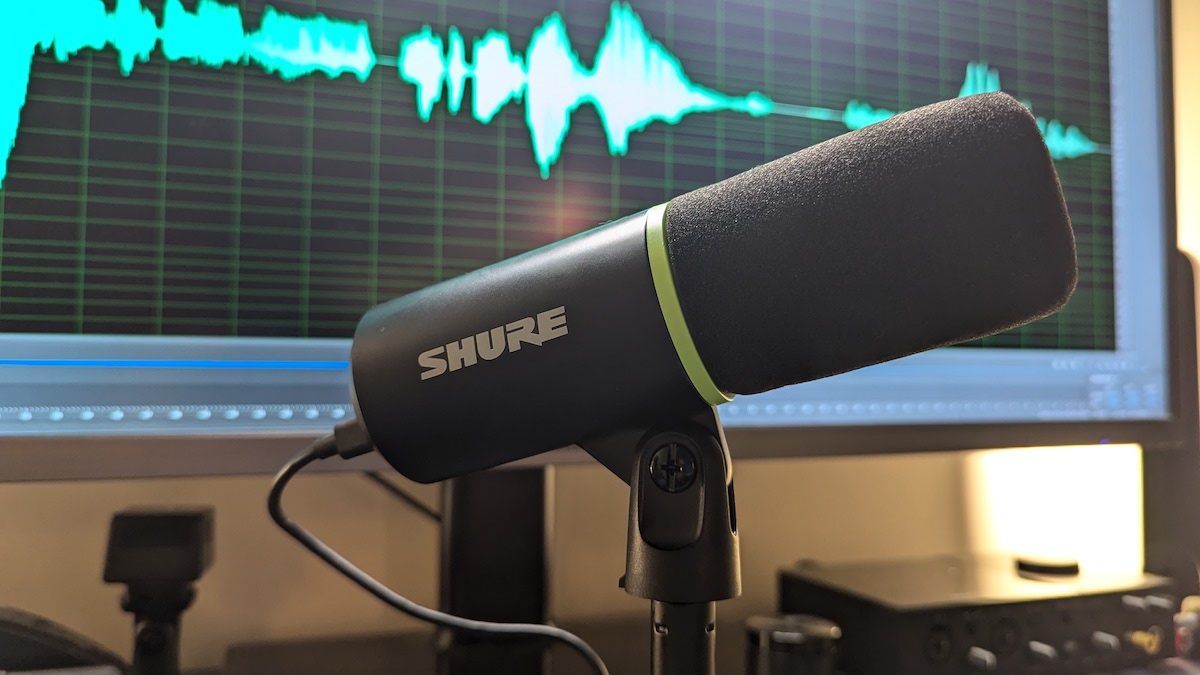
Specifications
Reasons to buy
Reasons to avoid
✅ Buy if you're a gamer who needs a no-fuss mic: The Shure MV6 is well-built, excellent for voice overs and makes an ideal gaming mic.
❌ Avoid if you want a little more for your money: Investing in the Shure MV7+ will give voiceover work a bit more oomph - although it does come with a added financial outlay.
Build quality: ★★★★
Sound: ★★★★½
Ease of use: ★★★★½
Overall: ★★★★½
The lowdown: Some of you reading this are irredeemable gear enthusiasts, rubbing your hands with glee at the opportunity to get to grips with something new, exciting and a little bit techy. But some of you aren’t. And many of this silent majority will be desperate for something that simply Does The Thing – without interminable knobs, controls and installation processes. This entry is whole-heartedly for you.
In form, the Shure MV6 is essentially an en-simplified MV7+ – which, incidentally, is my vote for the best USB microphone your money can get you. If you’re wanting the best possible trade-off of quality, convenience and cost, though, the MV6 could well be the easy-to-use USB mic you’ve been looking for.
Build quality: The Shure MV6 shares enough in common with its ‘bigger’ sibling that build quality is of no concern here. It bears some semblance to the MV7+ and the SM7B upon which both are based – including a round metal chassis to keep the gubbins in. Here, there’s a bright green plastic cage beneath that foam windshield, that happily shouts, “I’m the cheaper one!” For your purposes, the MV6 is absolutely rugged enough.
Sound: There isn’t a lot to shout about here; the MV6 isn’t winning any special awards for extensive frequency range or pleasant sound-colouration, but it is an excellent-value piece of kit for the day-to-day and for its price. With some clever built-in denoising and pop-filtering DSP, it’s far easier to get clean results in an untreated space and without much additional faff.
In use: While it’s not winning any awards for naked sound character, the Shure MV6 certainly excels at its brief when in use. The point is that it’s a plug-and-play thing, besides a tiny bit of fiddling in Shure’s MOTIV Mix app, gives you control over the things you’d usually be controlling with knobs and the like. Such things include the content and output level of the MV6’s built-in headphone jack, and the various DSP algorithms that gain-stage your mic and neaten up the sound on your behalf. After some miniscule taps and tweaks, your plug-and-play USB mic is set for life.
Whether you’re a nascent PC-gamer-about-web, or someone wanting to dip your toes into the world of voiceover work without getting an audio engineering degree first, this sleek, simple and largely hands-free desktop microphone is about as good as you can get.

"While the Shure MV6 isn’t going to feature highly on any lists for music-making, it does excel at delivering quality recordings in a supremely user-friendly way. For content creators interested in making vocals and speech sound better, it’s easy to recommend."
Read more: Shure MV6 review
Best dynamic mic

Specifications
Reasons to buy
Reasons to avoid
✅ Buy if you need a mic to deliver crystal clear audio: The quality of analogue-digital conversion here is excellent and it delivers lovely, warm audio.
❌ Avoid if you want a cheaper, more basic mic: The dynamic performance is excellent, but you may simply want a functional mic at a cheaper price instead.
Build quality: ★★★★★
Sound: ★★★★½
Ease of use: ★★★★½
Overall: ★★★★½
The lowdown: Many USB microphones seem to have a lot in common. The cheaper ones are often geared towards an internet-savvy crowd of online-gamers, streamers and podcasters, with the RGB lights to prove it – but the similarities can stop quite abruptly after aesthetics, and after their mode of connection. For instance, USB mics can have any possible polar pattern, can have a wide variety of different analogue and digital features, and, crucially, can be either be dynamic or condenser microphones.
Condenser microphones are, broadly speaking, preferred for their high sensitivity; dynamic mics are suited better to certain use cases for their selectiveness, particularly where you want a clear vocal signal in a busy room. If you want great sound for your at-home recordings with minimal attention given to room treatment or noise sources, or for capturing voices in a group setting, a dynamic mic is what you want – and the Audio-Technica AT2040USB is what you need.
Build quality: Being the USB version of the Audio-Technica AT2040, the build quality of this USB microphone isn’t just good: it’s tried-and-tested good. The integrated grille and windscreen are solid as anything, and even more sleek-looking for their sunk-in inclusion. The mic clip that bands around the AT2040USB’s midriff is solid, too; when you get this installed by your desk, you’ll have little to worry about but the quality of your recordings. And even then…
Sound: There are other dynamic mics in this list that I’ve already waxed poetic about – and one I’ve even called the best overall. With specific regard to dynamic USB microphones, though, this one pips the rest to the post, if only for the quality of analogue-digital conversion happening inside that chassis. If you want, you can capture audio up to 24-bit/96kHZ resolution, or as resolute as you’ll ever need a piece of audio material. Couple this with the AT-2040’s warm and natural sound, and you have an extremely solid microphone for a steal.
In use: On top of the great resolution and already-great sound, the AT2040 USB incorporates a low-cut filter around 80Hz – a small gesture that makes a big difference when it comes to things like desk vibrations or footsteps on hard ground. Further still, this is a rare dynamic USB microphone in that it has a hyper cardioid polar pattern, meaning it will reject sound from its rear left and rear right as opposed to from dead behind. If you have desk neighbours, or an especially noisy computer tower next to your monitor, this mic will naturally reject those sounds in favour of your pleasing baritone. In a word, this microphone is functional. In two? Hyper functional.
The Audio-Technica AT2040 USB is a surprising USB microphone. It takes its brief and runs with it, cramming a shedload of practical utility into a small chassis then charging not at all much for the privilege. I highly recommend this generally, but as dynamic USB mics go, this is brilliant.

"It’s hard to believe the price of the AT2040USB. For speech and voice applications, it’s the pick of the bunch, however for more musical pursuits you might be better looking elsewhere."
Read more: Audio-Technica AT2040USB review
Best portable
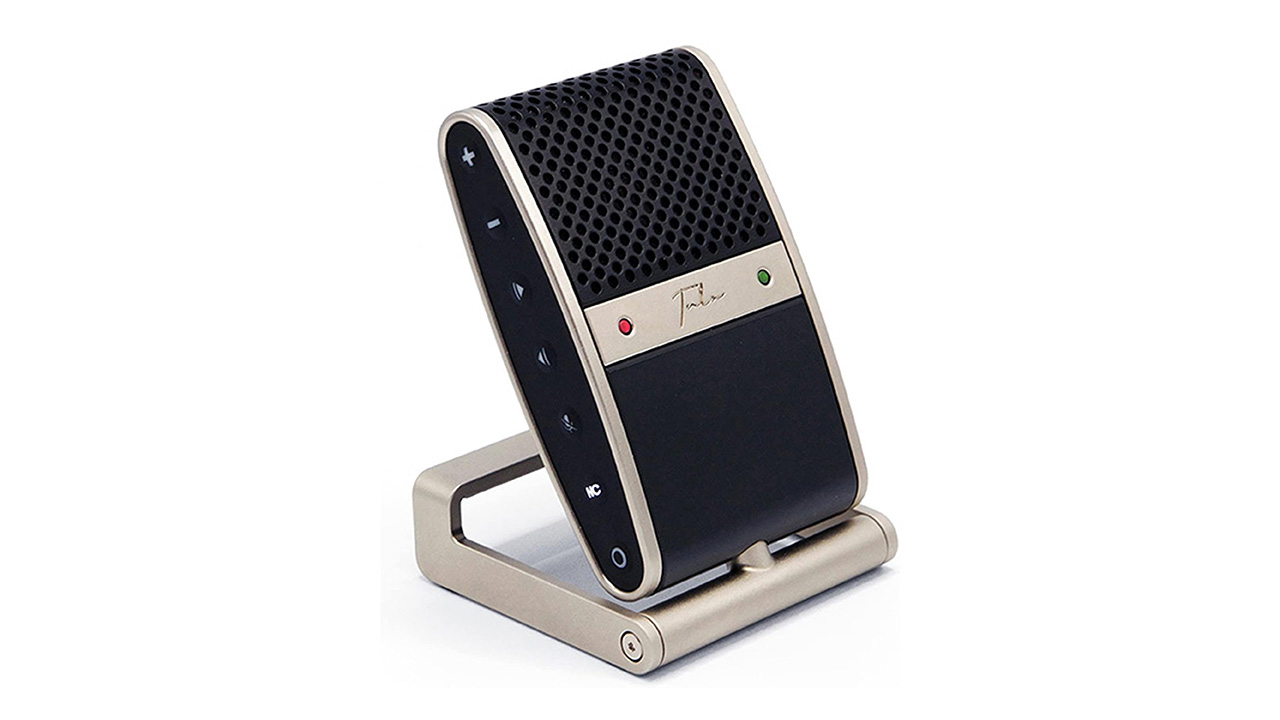
Specifications
Reasons to buy
Reasons to avoid
✅ Buy if you're looking for a field recorder or a mic for recording outside: The Tula Mic has a frequency range of 50Hz to 20kHz, 12 hours of battery life and an easy to use interface.
❌ Avoid if you're only recording indoors: There are better mics in this list for you if you're planning to do all your audio work indoors.
Build quality: ★★★★½
Sound: ★★★★
Ease of use: ★★★★
Overall: ★★★★
The lowdown: Most of the USB microphones I’ve reviewed here are destined for the sedentary life. Whether they’re desk mics for levelling up your streaming game, or stand-mounted mics for podcasts or music, most of the products you’ll find are designed with a studio environment in mind. But this isn’t the case for many other USB microphones, which take cues from elsewhere to provide unique functionality out on the road.
One of my favourites in this sub-genre of portable USB microphone is this: the Tula Mic. Tula comes from one of the founders of premier mic brand Soyuz, and the Tula Mic – a fully portable USB-mic-cum-field-recorder, comes from collaboration with engineers from Teenage Engineering. The result is something near-entirely excellent.
Build quality: The Tula Mic is impeccably well put-together – both from a construction point of view, and a design point of view. Being heavily committed to the consumer’s right to repair, the Tula Mic is designed to be easily dis- and re-assembled for future maintenance. Combined with some high-quality materials and a bombproof finished article, there’s a lot to love about the Tula’s build.
Sound: The Tula mic has a frequency range of 50Hz to 20kHz, a respectable (even predictable) range that reaches a little further up than many of the vocal-oriented USB microphones elsewhere in my list. Unsurprisingly, this positions the Tula well for capturing a wide variety of different sources – as does the switchable polar pattern, made possible by the cardioid and omni capsules housed behind that chic grille. Built-in noise reduction from Klevgrand offers some on-the-go assistance for capturing clear audio, that doesn’t get in the way too much.
In use: With 12 hours of battery life, it’s difficult to run this thing down in one sitting. It’s genius as a field recorder, with a minimalist control interface and some high-quality results; it’s just as good at home, with plug-and-play functionality as a standalone USB microphone.
Firmware updates released after the Tula Mic’s initial launch have made some serious improvements to how it works, upping its practicality considerably in the process. My favourite is the Interview mode, which enables you to capture multitrack recordings of both the Tula Mic itself, and input from (for example) a lavalier mic plugged into the combination headphone-out/mic in port.
The Tula Mic is a phenomenal piece of kit, and in my opinion a must-buy for the budding field recordist or reporters among us. Its features are peerless, except perhaps against some of the more expensive purpose-built field recorders you can buy – and it looks ten times better than those, if you care about that sort of thing. A real winner!
Best for streaming
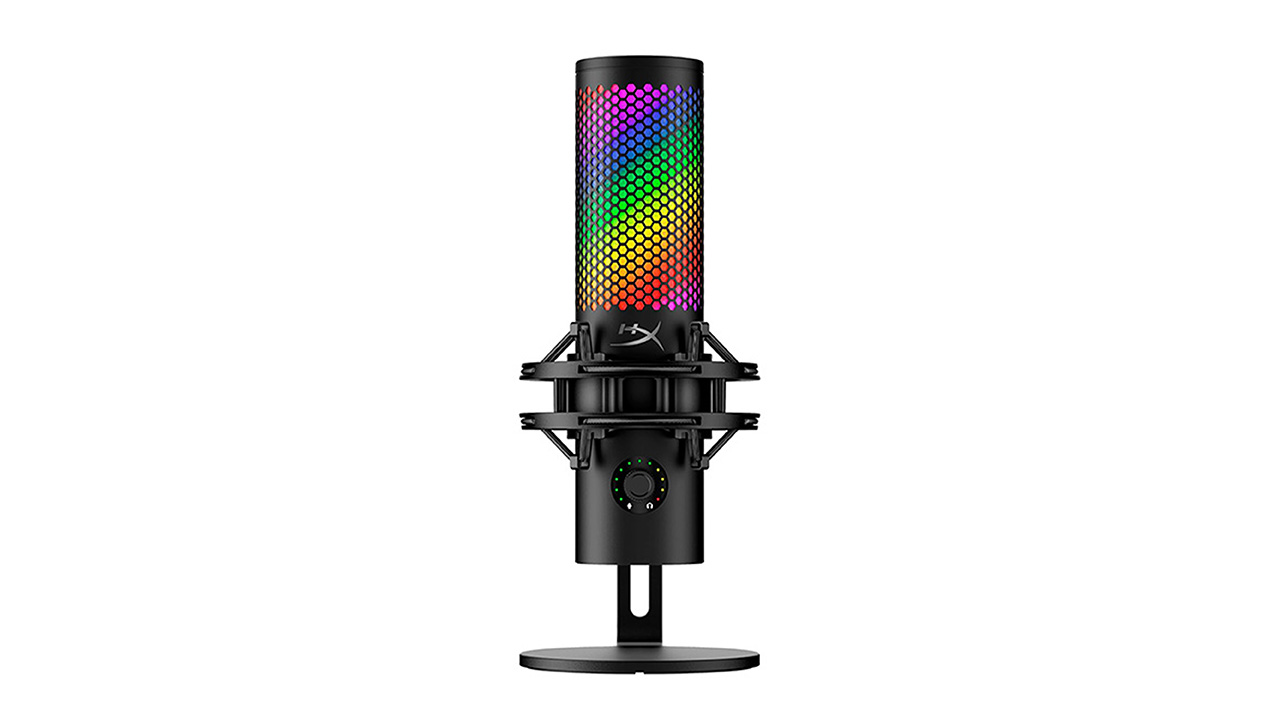
8. HyperX QuadCast 2 S
Our expert review:
Specifications
Reasons to buy
Reasons to avoid
✅ Buy if you're a gamer looking to live-stream: The eye-catching design will help elevate your live streams.
❌ Avoid if you prefer a more traditional approach: With its flashy looks, not everyone will be a fan of the design of the HyperX QuadCast 2 S.
Build quality: ★★★★
Sound: ★★★★
Ease of use: ★★★★
Overall: ★★★★
The lowdown: For streamers, there’s a whole different set of criteria to think about when picking the right USB microphone. Streaming microphones need to be ok with incredible dynamic shifts and crystal clear with vocals – things you might look for in certain types of other microphone, sure – but they also have to look good front and centre on camera.
The “streaming tech” corner of the market has been swamped by flashy plastic devices that claim to be the piece of the puzzle you’re missing, but only provide sub-par audio while literally flashing in your face. Here, we have a bona fide streaming USB microphone, with fidelity and adaptability your streams can actually benefit from; also, as a bonus, it’ll quite literally flash in your face. Welcome to your streaming win-win, the HyperX QuadCast 2 S.
Build quality: HyperX comes from a different corner of the audio tech market; where most of the microphones I’ve reviewed here come from established names in professional audio, HyperX is a gaming brand, and part of the HP fold. It might not share the same goals as brands like Shure and Sennheiser, but it still makes for a compelling choice of microphone – particularly if you’re intent on streaming or online gaming. The QuadCast 2 S is lightweight, but nonetheless sturdy, with its metal frame incorporating a hexagonal mesh grille.
Sound: I was pleasantly surprised by the sonic capabilities of the HyperX QuadCast 2 S – a USB microphone that reaches above its intended audience with some very swanky specs. For a start, it’s home to a whopping three condenser capsules, which offer a total of four different polar patterns for different setups and user needs.
You can run the QuadCast 2 S as a standard cardioid microphone, or you can switch it to omni for all-round coverage. There’s a figure-of-eight mode for rejecting noise directly at the sides of the microphone, and even a stereo option for binaural goodness. Behind the capsules, there’s another secret weapon that frankly has no right being in this chassis: 32-bit/192kHz resolution, a futureproof level of audio fidelity that makes noise floors practically a thing of the past.
In use: To use, the HyperX QuadCast 2 S is understandably a tiny bit fiddly. To access a lot of the more involved settings, you need to use HyperX’s NGENUITY software – but some basic controls, including mic gain, monitor headphone levels and even polar pattern modes, can be accessed by the single rotary knob on the front of the chassis. This one-knob practicality is hugely welcomed, as is the generous capacitive tap-to-mute zone atop the QuadCast’s grille.
If you’re a gamer, this is a no-brainer. Given its impressive price, it could also be a no-brainer for a fair amount of non-gamers, too. The customisable aRGB really does put it in the ‘gamer’ corner, though… Still, 32-bit resolution and four polar patterns? That’s an easy choice.
Best for singing

Specifications
Reasons to buy
Reasons to avoid
✅ Buy if you're after a good-sized mic for singing: This mic is easy to use and an ideal choice for home singers looking to lay down some vocals.
❌ Avoid if you want features that are right up to date: While this is a top-performing mic, more recent mics do have added bells and whistles.
Build quality: ★★★★½
Sound: ★★★★½
Ease of use: ★★★★½
Overall: ★★★★½
The lowdown: Apogee is a brand best known for its audio interfaces, the Apogee Duet series having been a mainstay portable interface for many pro artists and producers. The Apogee HypeMic is the brand’s earnest – and highly successful, at that – attempt to bring some of its audio-interface smarts to the world of the USB microphone. The result is an astonishing piece of portable kit that’s capable of some pristine vocal captures, among other things.
Build quality: The Apogee HypeMic is small, but by no means dinky. It has some reassuring solidity to it, as well as a reassuring ratio of size to weight. Combined with the all-metal desktop tripod supplied with it, you have a sturdy setup that certainly won’t suffer from some incidental knockings-about. I’m also going to take this opportunity that I, in no uncertain terms, love the size of the knob on the front of this thing.
Sound: The Apogee HypeMic is one of the best-sounding USB microphones I’ve personally encountered. It has a wide, natural sound – hugely useful, but a little on the cleaner side than some vocalists might personally prefer to hear nakedly when tracking. Even with the compression engaged, there’s no over-colouration of sound; indeed, that compression comes from an extremely adept analogue compressor circuit, with three settings of different strengths for different purposes. Being a maximalist, I like the presence that the strongest setting brings the most.
In use: The HypeMic is a very easy microphone to use – and easier for producers or engineers with prior studio experience, too. It bears a lot in common with some popular condenser mics in form and practice, so setting up for a recording session is business as usual. The buttons on the front of the HypeMic make navigating gain and monitor settings (as well as aforementioned compression settings) a breeze; I’m especially grateful I don’t need an app to handle any of the HypeMic’s features!
The Apogee HypeMic is the gold standard for professional USB microphones. It may have been usurped in recent years by microphones with a little more versatility or contemporariness about them, but there’s something to the form, function and feature-set of this nifty little mic that keeps me coming back to it. An ideal one-stop shop for the home-recording singer.

"The analogue compression feature is the icing on an already rich cake as the mic itself records in crystal clear quality as you might expect from a company with Apogee's credentials. I also like the fact it's truly mobile ready, with everything you need to connect up to your laptop or iOS device. And with a bundle that includes tripod, pop filter and a decent carry case, this really is a great all-round and fantastic sounding USB microphone package."
Read more: Apogee HypeMic review
Also tested
IK Multimedia iRig Mic HD 2 ★★★★
These unassuming plug-and-play mics have grown in popularity with the broadcast crowd on account of their ease of use, great sound quality and native support for Apple mobile devices. The iRig Mic HD offers that winning combination of simple operation, low price and high performance.
Read more: IK Multimedia iRig Mic HD 2 review
Audio Technica AT 2005USB ★★★★½
These unassuming plug-and-play mics have grown in popularity with the broadcast crowd on account of their ease of use, great sound quality and native support for Apple mobile devices. The iRig Mic HD offers that winning combination of simple operation, low price and high performance.
Read more: Audio Technica AT 2005USB review
AKG Lyra ★★★★½
If a microphone is going to take centre stage in your vlogs or streaming sessions, then it doesn’t hurt for it to look interesting. The AKG Lyra is perhaps the most visually striking mic we’re recommending, but it also has a huge amount of versatility going on under its vintage exterior.
Read more: AKG Lyra review
How to choose
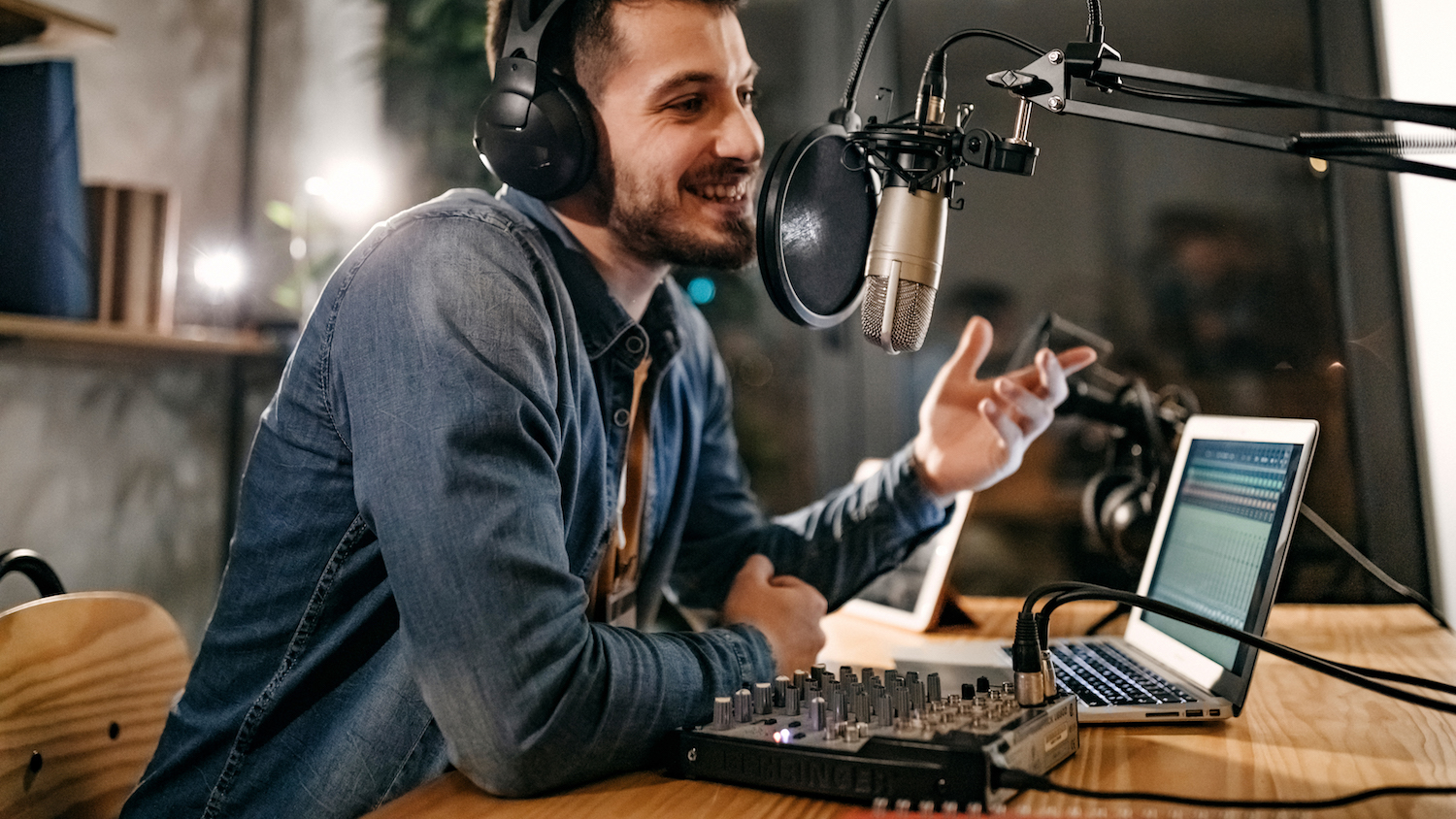
USB microphones are useful in a wide variety of different situations – but those different situations can demand different things of your microphone. Podcasters will be looking for different parameters than Twitch streamers, while home-recording musicians might want a completely different feature-set altogether. If you’re not sure where to start, I’ve broken things down here; the following five criteria are the key things you should be looking at when buying your first – or indeed next – USB microphone.
1. Polar patterns
A microphone’s polar pattern is, effectively, its ‘field of view’ but for sound. As a diagram, a polar pattern is drawn as a shape over four axes, the centre of which is your microphone. The further out the line, the more it ‘hears’ from that direction; the closer to 0, the more sound it ‘rejects’ from that direction.
The most common polar pattern you'll encounter, particularly as a singer on stage, is cardioid; cardioid microphones listen predominantly to sounds that happen in front of them, and reject sounds that happen behind them. For most use-cases, cardioid is great. This is a directional polar pattern that suits recording or capturing specific sound sources, like voices or instruments – particularly if you can place the microphone directly between them and other sound sources you don’t want to capture.
However, if you want to reject sounds happening to the sides of the mic, as opposed to directly behind – for instance, if you’re recording a round-table podcast discussion, or usually have a snoring dog next to your streaming setup – super cardioid is the better choice. Likewise, if you want one mic to capture everything around it, you want an omnidirectional polar pattern. Some USB microphones may even offer you the chance to switch polar patterns according to your needs.
2. Modelling capabilities
USB microphones are useful in that they are their own audio interface. In the chassis somewhere, there is an ADC (analogue-digital converter) which converts the analogue electrical signal generated by the microphone’s diaphragm into digital information, in order that it can be sent as data through your computer, phone or tablet’s USB port.
Since the sound you’re capturing has already been converted into data inside the microphone, some mics take the opportunity to do more with your sound before it makes it to its destination. For instance, the Rode PodMic has Aphex DSP built in, controlled by a proprietary Rode app but applied to your audio before it leaves the microphone.
Other USB microphones might offer their own app or programme, which provide digital control of settings for different results. Such results include different microphone sound profiles, which can be a godsend for home-recording musicians wanting to go big with their demo-making.
3. Interface features
Speaking of USB microphones being their own interface, some will go a step further with functionality on this front. For instance, you can expect an on-board gain control on the vast majority of them, to make setting levels for your audio’s destination a breeze.
Some will lean into the role completely, and offer additional auxiliary inputs for capturing or recording other channels of audio separately. Most enable the conversion of data back into analogue audio, in order to let you monitor sound through a built-in headphone output. The headphone output is particularly useful for those who need a USB mic on the go, for street interviews or field recordings.
4. Portability
This leads us neatly onto a key consideration for many who think they might need a USB mic in their lives: portability. Just how travel-friendly does your eventual choice of microphone need to be? If you’re a streamer or at-home musician making demos, the answer is “not very”; if you want to record out and about, you want to look for something not just designed for the task (i.e.: handheld mics for interviews, or self-sufficient USB-mic field recorders for capturing rural ambience). Further, you want to know that it can withstand a drop or two! Metal chassis are votes of confidence on this front, as are hardy travel cases.
5. Fidelity
Lastly, most importantly, and yet the least of your worries, we come to fidelity. There are two separate considerations here: the quality of the diaphragm, and the quality of the microphone’s ADC. A sub-par diaphragm might return a weird frequency range and response, and hence some audio that needs a bit more love before it can be shared confidently – but this is rare in all but the cheapest of consumer-grade fare.
Meanwhile, pretty much all of the best USB microphones are capable of high-resolution recording as standard. If fidelity is of vital importance to you, whether you’re capturing audio for sound design purposes or expect a bare minimum to work with in post, then you’ll want to look out for microphones that advertise 24-bit/48khz resolution at minimum – which, today, is most of them – or up to 96kHz for special applications.
FAQ
What is a USB microphone?
A USB microphone is a microphone which delivers the audio it captures digitally, via a USB connection, to your device of choice. Conventional microphones, as used in studio and stage settings, are usually connected-to via an analogue audio cable – typically an XLR cable – and need to be plugged into an audio interface for any audio to be parsed by a computer. USB microphones skip the middle-man, and enable you to capture or record audio in your phone, tablet or computer without additional intervening technology.
Why do I need a USB microphone?
A USB microphone can be a handy thing in a number of different scenarios. As a songwriter or practicing musician, you might want an easy-to-use recording setup so you can track your progress or write demos, for instance.
Alternatively, you might want to try your hand at streaming on a platform like Twitch, for which you’d need to be able to stream your voice as well as your face and screen; a USB microphone guarantees higher-quality audio capture, for professional results.
Similarly, you might want to start a podcast with some friends, in which case a USB microphone is an inexpensive entry-point to getting solid recordings without needing to invest in interfaces, cables and other equipment. Long story short: USB microphones are an accessible route to handling audio capture or recording, both in terms of ease of use and outright cost.
How do I set up a USB microphone?
Setting up a USB microphone is as simple as connecting it to your device of choice via the correct USB cable. That’s it! Well, aside from selecting your microphone as audio input and output in your device’s sound settings, and following any steps necessary to get the audio routed to your software, website or application of choice. There may also be proprietary software to download, which could give you access to digital control over the microphone’s settings – or simply just some cool tools to enhance your audio-capturing experience.
How do I use a USB microphone?
Setting up a USB microphone is simple enough, and so too is using it – though there’s a little more to bear in mind. For instance, you’ll need to know where your audio is destined for first. As a singer recording some new demos, you’ll want to use a DAW (Digital Audio Workstation) to record and develop your ideas. If you’re a streamer, you could stream straight to your platform of choice – but using a purpose-built streaming app like OBS Studio enables you to manage the various inputs and outputs you’ll need.
Where and how you place your microphone has huge impacts for the kind and quality of sound you capture. If you’re recording your voice, you want to ensure your microphone’s diaphragm is facing your mouth – ideally from about 6” to 12” away, and either slightly above or slightly below your mouth to avoid catching your breath.
If you’re capturing your voice while streaming video games, you’ll want to anchor your microphone somewhere other than the surface of your desk, if only to avoid it picking up your keystrokes and mouse movements through your desk; a boom arm is a popular choice for streamers because it avoids this problem, while also making moving your mic around easier.
You’ll also need to think about gain-staging, whatever audio you intend to capture. Gain-staging is simply the act of controlling how much a signal is amplified at each stage in an audio signal’s path. Low gain from your microphone might mean you need to turn up the resulting audio in your software, which increases the amount of noise you hear in the background; high gain from the microphone might clip in your software, resulting in irremovable distortion.
Your destination software will likely have a fader or indicator for monitoring incoming audio levels, if not the microphone itself; you want this to indicate a healthy signal, not so quiet as to require boosting later on, and not so loud that the audio is clipping, or ‘redlining’. Test your microphone with sounds roughly the max volume you expect to reach, and adjust the volume to show a healthy incoming signal.
Can I use a USB microphone with my smartphone?
Yes, you can. Smartphones are more than capable of handling separate audio sources, and can even receive multi-channel audio through a compatible audio interface. Historically, it was a bit more complicated mating audio tech with smartphones, particularly in the days of differing hardware standards, pesky micro-USB frustrations and Apple’s proprietary charging ports.
Today, though, with USB-C becoming the norm and hardware standards somewhat converging, it’s much easier to mate USB microphone technology with portable devices. For best results, you want to be sure that your microphone has a USB-C connector, and your smartphone has a USB-C port. Some USB mics may even have a Bluetooth connectivity option, simplifying things further – though if you want to use this for live streaming or simultaneously filming and recording audio, you may fall prey to the high latency of the Bluetooth standard.
Do I need an audio interface for my USB microphone?
You do not need an audio interface for your USB microphone; it already has an audio interface inside it. That said, some USB microphones – like the Shure MV7+ - also have an analogue XLR output, meaning they can be used as a ‘dumb’ analogue microphone with an audio interface if you so choose. It’s also worth mentioning that you may want to consider investing in an audio interface if you want to use more than one microphone; multitrack recording with microphones is easier with analogue XLR-connectible mics and an interface or mixer.
Do USB microphones cause latency?
Latency is the delay you might experience as a result of digital signal processing or routing. Bluetooth, for instance, has inherent latency of up to 200 milliseconds, as a result of the audio signal’s various translations between source and destination. It’s a common problem to deal with in audio engineering, as the conversion of analogue signals to digital can delay the arrival of a given sound.
USB microphones, being devices that output a digital signal via USB port, do have latency. The length of the delay can differ from microphone to microphone, dependent on the technology harboured within; your own computer’s hardware and software settings can also impact the latency of the signal.
Crucially, latency can be offset in your DAW – and most USB microphones offer a headphone output with zero-latency monitoring, which tends to mean analogue circuitry serving you the analogue output of your microphone before it reaches digital conversion.
How do I make my USB microphone sound better?
Regardless which USB microphone you buy from my list above, you are practically guaranteed the possibility of getting some truly pristine audio captures. They’re all more than capable of doing so, but that doesn’t mean you’ll get broadcast-quality results out of the box. Ask any audio engineer who’s spent more than a few years behind a mixing desk, and you’ll get the same answer: it’s not (always) the gear, but it’s where and how you use your gear.
For instance, using practically any microphone in a completely bare-walled, untreated box room will result, surprise surprise, in a boxy, unpleasant-sounding recording. Room reflections don’t just add unwanted reverb to your recording, but also weird resonances that alter the character of your sound source. A quick and simple way to improve the sound of your USB microphone is to reduce the amount of reflection in your space; uneven surfaces are great for this, so maybe consider putting bookcases against a couple of walls, with different sizes of book placed at different depths.
If you’re a voiceover artist, or a musician hoping to make some killer home demos, you’ll want to work a little harder to ‘deaden’ the room you work in. Don’t bother buying those stick-on foam acoustic panels for your wall, that you often see in DIY recording and streaming setups; they aren’t nearly as effective as they seem at ‘deadening’ a room.
A far better, and cheaper, solution would be a thick floor-length curtain, that you can draw across a wall or even into your space to artificially shrink it. Pros would take acoustic measurements of a room and install bespoke acoustic isolation panelling to defeat specific standing waves or reflections, but you won’t need to do this until you’ve really caught the audio-engineering bug.
If you’re a field recording artist, sound designer or simply working on location, then the next-most important considerations for a better sound are the take, and the processing you apply to it. A recording is only as good as the sound you’re recording, so don’t settle for ‘ok’! The less you have to try and ‘fix in post’, the better.
Speaking of which, tasteful use of certain effects plugins in your DAW after the fact can be useful in bringing out more of the sound you’re trying to capture, provided you’re not working too hard to represent something that isn’t there to begin with. Compressors even out the dynamics in a recording (to vastly simplify a very deep subject), while EQs can be used to sculpt the sonic profile of a take or manage less-desirable aspects.
Is USB better than XLR?
XLR is the analogue connector standard for studio microphones. It is a three-pronged connector that enables the delivery of balanced audio – wherein a phase-inverted copy of the signal is sent alongside the original, to be reverted and summed with the original at the destination. This is a clever bit of design, that basically eliminates any interference picked up along the wire; it also resists the high-frequency roll-off that long lengths of unbalanced cable can introduce.
XLR is an industry-standard connector for a reason, and it isn’t going anywhere soon. That said, it exists to deliver analogue audio signals (and can be a vehicle for phantom power, too). USB is a different kettle of fish entirely, being a connector standard that enables the delivery of power and data.
USB microphones do not output an analogue signal like conventional, XLR-equipped microphones. Instead, they send out converted digital data to be interpreted by a computer or smart device directly. This is excellent for convenience and for accessibility, but does limit you to the converters inside the microphone itself.
I don’t think it’s a case of USB being better than XLR, but rather a case of two different standards enabling two different ways of accessing a result – audio, in your computer. XLR microphones require a bit more investment in equipment to process and convert their audio, but reward you with modularity, control and incredible sound. USB microphones reward you with ease of use, immediate results and compact recording setups.
What’s the difference between USB and USB-C?
USB-C is the latest standard of USB-C connector, and one that brings various improvements on its predecessor – including its ability to be plugged in whichever way round you’d like. More importantly, the USB-C standard enables the faster flow of data and the delivery of more charging power.
Most USB microphones now boast USB-C connectors, both for being the contemporary standard and for enabling better internal tech (including the delivery of extremely high-resolution digital audio files). However, some mainstay microphones retain older USB designs – like the Apogee HypeMic, which still uses the micro-USB port of early Android devices.
Glossary
ADC (Analog-Digital Converter)
ADC stands for Analogue-Digital Converter, and refers to the audio interface inside a USB microphone – that converts the analogue electrical signal generated by the microphone’s diaphragm into digital information.
Audio interface
An audio interface is a device which enables audio to pass to and from a computer, smartphone or tablet. These can be bought standalone, and are useful for interfacing analogue microphones with a digital destination, like a DAW. USB microphones already have an audio interface built into them, which is what enables the microphone’s signal to be received by your device of choice.
Cardioid
Cardioid is a form of polar pattern; a cardioid microphone picks up audio in a 270-degree cone in front of it, and rejects audio from directly behind it.
Condenser
A condenser microphone is a microphone with active circuitry, meaning it requires power to operate. Condenser microphones are more sensitive than other types of microphone, picking up sounds from within a wider dynamic range. This sensitivity is great for capturing varied and quieter sources in high fidelity, but can also result in audio captures picking up more room noise.
DAW
A DAW, or Digital Audio Workstation, is a programme that enables you to record, edit and mix audio files. Musicians, audio engineers and producers use DAWs for everything from writing music to recording it, mixing it and mastering it. If you want to record audio from your USB microphone into your computer, whether you’re demoing your music or recording a voiceover, you’ll want to use a DAW to do so.
Diaphragm
The diaphragm of a microphone is the sensitive apparatus that detects sound. Sound waves excite the diaphragm, inducing a variable voltage in a circuit. This voltage is then conditioned by more circuitry before traveling to the next stage in the signal path. For a USB microphone, this is the built-in ADC that converts the signal to digital information.
DSP (Digital Signal Processing)
DSP, or digital signal processing, is the processing of a digital audio signal – often via a VST plugin in a DAW (Digital Audio Workstation), but sometimes through some native software. Many USB microphones have built-in DSP, that condition the signal you’re recording by adding compression, removing noise or even adding effects like reverb.
Dynamic
A dynamic microphone is a microphone with passive circuitry, requiring no power to work. Dynamic microphones use the principle of induction to convert physical vibrations of the diaphragm into electrical signals; this requires a little more work than condenser microphones, meaning a slower transient response and less responsiveness to low-energy room noise. As such, dynamic microphones suit themselves to louder sound sources.
End-address
An end-address microphone is a microphone with a diaphragm pointing outwards from the end. Most stage vocal microphones, like the Shure SM58, are end-address microphones.
Latency
Latency is the delay introduced in a signal’s path, usually a result of the time some software needs to convert or process digital audio. If you’re recording with a USB microphone, the resulting digital audio will reach its destination a number of milliseconds after it was initially captured. There are ways of managing and minimising latency, but zero-latency monitoring minimises the negative impacts of latency while recording.
Omni
Omni is a form of polar pattern; an omni microphone detects audio from all angles around it.
Polar pattern
A microphone’s polar pattern describes what it can hear in any given space. A combination of variables alter how a microphone ‘hears’, with phase cancellation often causing dead zones around a microphone where audio is ‘rejected’ or nulled. Where these dead zones are, and where audio is heard the clearest, changes for different types of polar pattern.
Side-address
A side-address microphone is a microphone with a diaphragm pointing outwards from the side. Studio microphones like the Telefunken U47, and the Apogee HypeMic which sort-of borrows its form, are side-address microphones.
Super-cardioid
Super-cardioid is a form of polar pattern; a super-cardioid microphone picks up audio in a 270-degree arc to its front, and from directly behind, but rejects audio from its rear-left and rear-right.
USB/USB-C
USB stands for Universal Serial Bus, and describes a common type of connector that enables the transmission of both power and data to and from electronic devices. Most USB microphones today utilise the USB-C standard, which has higher power-transfer capabilities, faster data transfer capabilities and a reversible connector design.
XLR
XLR is a connector standard used by most conventional microphones. It is a balanced connector, with three cables. Some USB microphones also have XLR connectors, so they can be interfaced with studio equipment and other audio interfaces.
How we test USB microphones
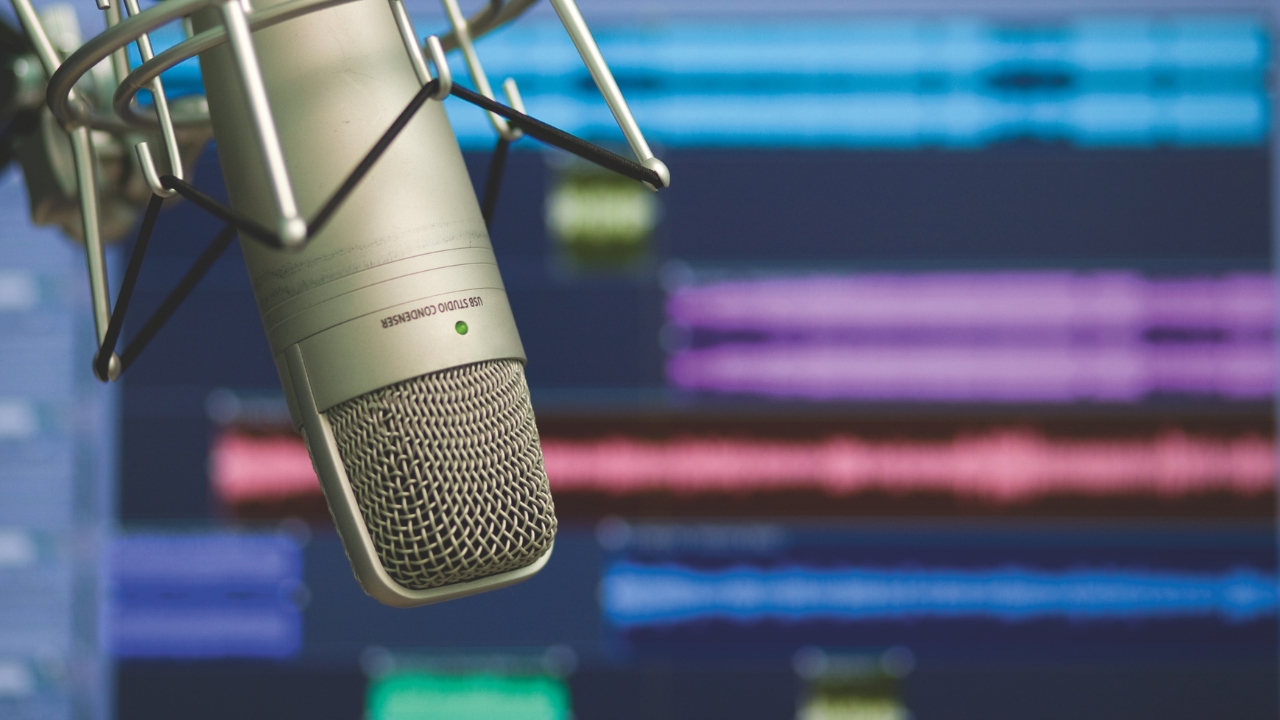
Our testing process for USB microphones is a little different to our usual microphone testing process. USB mics play a very different role compared to most other recording microphones in the fact that they're more often designed to record a human voice than any type of instrument. They're also obviously designed to plug directly into a computer, so the amount (and type) of signal processing is also different to that of a regular mic.
While testing USB mics, for the aforementioned reasons, we've found it's best to focus on voice recording quality, then, often comparing these often cheaper microphones with similarly spec'd studio vocal microphones or standards in the podcasting arena.
When focusing on vocals we take into account how microphones handle artefacts like sibilance and what has been provided to cut down such an occurrence – a pop shield might well come with the microphone, either separately or built into it, for example. Podcasting mics also tend to come with other items like podcast recording software designed to get you up and running in the world of podcasting, a desktop mount to place the mic firmly next to your computer and (usually) some kind of carry case, so these are all taken into account when we look at value for money.
While podcasting mics are generally aimed at vocal recording, it's always good to stretch them a little in our tests to see whether they are any good at recording acoustic guitar or, more likely, singing. Having a flexible microphone that can be used for studio tasks as well as broadcasting your opinions can't be sniffed at, and some podcasting microphones are surprisingly adept at recording other instruments.
Obviously the final factor is price. USB mics tend to be cheaper than their studio equivalent so we take this into account with our overall findings and balance up whether it's worth paying more for a studio vocal mic and interface to get 'proper' BBC radio vocals for (sometimes) not that much more outlay.
Find out more about how we test music gear and services at MusicRadar.
Why you can trust us
☑️ MusicRadar established 2007
☑️ Over 5,000 reviews on-site
MusicRadar first launched in 2007 and has been an authority on drum gear ever since, rigorously testing the majority of key launches since day one. The site is run by a diverse team of passionate musicians who live to gig, record and jam, alongside a core group of trusted specialist freelance writers. We understands what players need, because we’re players ourselves, and we test from this perspective.
Our team have been testing music gear for 18+ years, constantly refining our methodology, delving deeper into products and drawing on our experience of what has come before to understand today’s products better than anyone.
Meet the experts

Chris Corfield is the main author of our best earplugs for concerts guide and comes with a wealth of experience when it comes to writing about everything from guitar gear, synths and mics, to putting music production hardware through its paces. After 12 years covering all aspects of music, he knows how important it is to look after his hearing when testing products.

James Grimshaw is a freelance writer and music obsessive with over a decade in music and audio writing. They’ve lent their audio-tech opinions (amongst others) to the likes of Guitar World, MusicRadar and the London Evening Standard – before which, they covered everything music and Leeds through their section-editorship of national e-magazine The State Of The Arts. When they aren’t blasting esoteric noise-rock around the house, they’re playing out with esoteric noise-rock bands in DIY venues across the country; James will evangelise to you about Tera Melos until the sun comes up.

James is a freelance writer and former Junior Deals Writer at MusicRadar. Before writing, James worked as a guitar salesman at a local music store, so he knows a thing or two about matching people with their perfect instruments. James also has experience working in other areas of the music trade, having worked for the online music distributor, RouteNote. James is a guitarist, bassist and drummer and has also toured the UK and Europe with his old band Hypophora.
Latest updates
13/08/25: This guide has received a significant update and all 9 of the main product entries are new. Each entry also have "At a glance" panels, star ratings and expert verdicts where applicable. A quick list of all 9 main products has been placed at the top of the page, while the entire FAQ section has been re-written from the ground up to give you more practical information about USB microphones. A glossary has also been added to the guide, along with a section on why you can trust the MusicRadar team.
Read more
MusicRadar's got your back
- Work the crowd with the best live vocal microphones
- Break free with the best wireless microphones
- Hold your microphone steadfast with the best mic stands
Want all the hottest music and gear news, reviews, deals, features and more, direct to your inbox? Sign up here.

James Grimshaw is a freelance writer and music obsessive with over a decade of experience in music and audio writing. He's lent his audio-tech opinions (amongst others) to the likes of Guitar World, MusicRadar and the London Evening Standard – before which, he covered everything music and Leeds through his section-editorship of national e-magazine The State Of The Arts. When he isn't blasting esoteric noise-rock around the house, he's playing out with esoteric noise-rock bands in DIY venues across the country.
